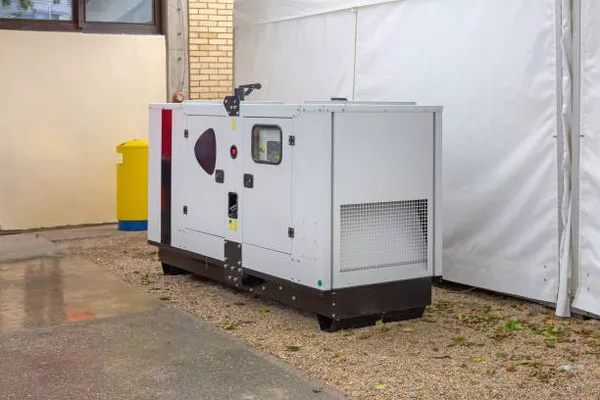Whole home generators are becoming increasingly popular as a reliable solution for uninterrupted power supply during outages. These generators offer peace of mind to homeowners, ensuring that essential appliances and systems continue to function even when the grid fails. But how do they work? In this article, we delve into the mechanics behind whole home generators, exploring their components, operation, and benefits.
Power Source
Fuel Options
Whole home generators typically rely on one of several fuel sources: natural gas, propane, diesel, or gasoline. Each fuel type has its advantages and considerations. Natural gas is a popular choice for its convenience, as it’s supplied through existing utility lines. Propane offers versatility, suitable for areas without natural gas access. Diesel generators provide robust power output and fuel efficiency. Gasoline generators are portable and widely available but may require more maintenance.
Fuel Delivery System
The fuel delivery system ensures a steady supply of fuel to the generator. In the case of natural gas or propane, a dedicated line connects the generator to the fuel source. For diesel or gasoline generators, an onboard fuel tank stores the fuel, with a mechanism for automatic refueling if connected to a continuous fuel supply.
Engine
Combustion Process
At the heart of a whole home generator lies an internal combustion engine, similar to those found in automobiles. When an outage occurs, the engine is activated either manually or automatically. Fuel is injected into the engine, where it mixes with air and is ignited by a spark plug or through compression (in diesel engines). This combustion process generates mechanical energy.
Types of Engines
Whole home generators typically feature either gasoline or diesel engines. Gasoline engines are common in smaller units, offering simplicity and ease of maintenance. Diesel engines are preferred for larger generators due to their higher efficiency and longevity. They can run continuously for extended periods, making them suitable for prolonged power outages.
Alternator
Conversion of Mechanical to Electrical Energy
The mechanical energy produced by the engine is transmitted to an alternator, also known as a generator head. The alternator consists of a rotating magnetic field and stationary coils of wire. As the magnetic field passes through the coils, it induces an electrical current according to Faraday’s law of electromagnetic induction. This current is then converted into usable electrical power.
Voltage Regulation
The alternator also regulates the voltage of the generated electricity to ensure compatibility with household appliances. Voltage regulators monitor the output voltage and adjust the excitation current to maintain a stable voltage level, typically around 120 or 240 volts, depending on the electrical system’s requirements.
Automatic Transfer Switch (ATS)
Seamless Transition
An ATS is a critical component that automatically detects power outages and switches the electrical load from the grid to the generator. It ensures a seamless transition, preventing disruption to connected appliances and devices. When grid power is restored, the ATS transfers the load back and shuts down the generator, returning to standby mode.
Safety Features
ATS units incorporate safety features to prevent dangerous conditions such as backfeeding, where electricity flows back into the grid. This can endanger utility workers trying to repair the power lines. The ATS isolates the generator from the grid to avoid such hazards, ensuring the safety of both users and maintenance personnel.
Control Panel
Monitoring and Control
The control panel serves as the command center for the generator, allowing users to monitor its status and control various functions. It displays crucial information such as fuel levels, battery voltage, engine temperature, and operating hours. Users can start or stop the generator manually, adjust settings, and schedule maintenance tasks.
Remote Monitoring and Control
Some advanced whole home generators feature remote monitoring capabilities, allowing users to access the control panel remotely via smartphone apps or web interfaces. This enables convenient monitoring and control from anywhere with an internet connection, enhancing accessibility and peace of mind.
Benefits of Whole Home Generators
Reliability: Whole home generators provide a reliable source of backup power, ensuring uninterrupted electricity supply during outages, regardless of their duration.
Convenience: With automatic operation and seamless transition, whole home generators require minimal user intervention, offering convenience and peace of mind.
Safety: Whole home generators reduce the risk of accidents and injuries associated with power outages, such as tripping hazards or exposure to extreme temperatures.
Protection: By keeping essential appliances and systems running, whole home generators protect against potential damage or loss caused by power disruptions, such as food spoilage or frozen pipes.
FAQs
How long can a whole home generator run continuously?
Whole home generators can run continuously for extended periods, depending on factors such as fuel capacity and maintenance. Diesel generators, in particular, are known for their durability and can operate for days or even weeks without interruption.
Can a whole home generator power all appliances simultaneously?
The capacity of a whole home generator determines the number and type of appliances it can power simultaneously. It’s essential to calculate the total power consumption of connected appliances and select a generator with sufficient capacity to meet the demand.
Do whole home generators require regular maintenance?
Yes, regular maintenance is crucial to ensure the reliable operation of a whole home generator. This includes tasks such as oil and filter changes, spark plug inspection, fuel system checks, and battery maintenance. Manufacturers typically provide maintenance schedules and guidelines in the user manual.
In conclusion
Whole home generators offer a robust solution for ensuring uninterrupted power supply during outages. By understanding their components and operation, homeowners can make informed decisions about selecting, installing, and maintaining these essential backup systems. Whether safeguarding against short-term blackouts or preparing for extended emergencies, whole home generators provide reliability, convenience, and peace of mind for households across various situations and needs.

